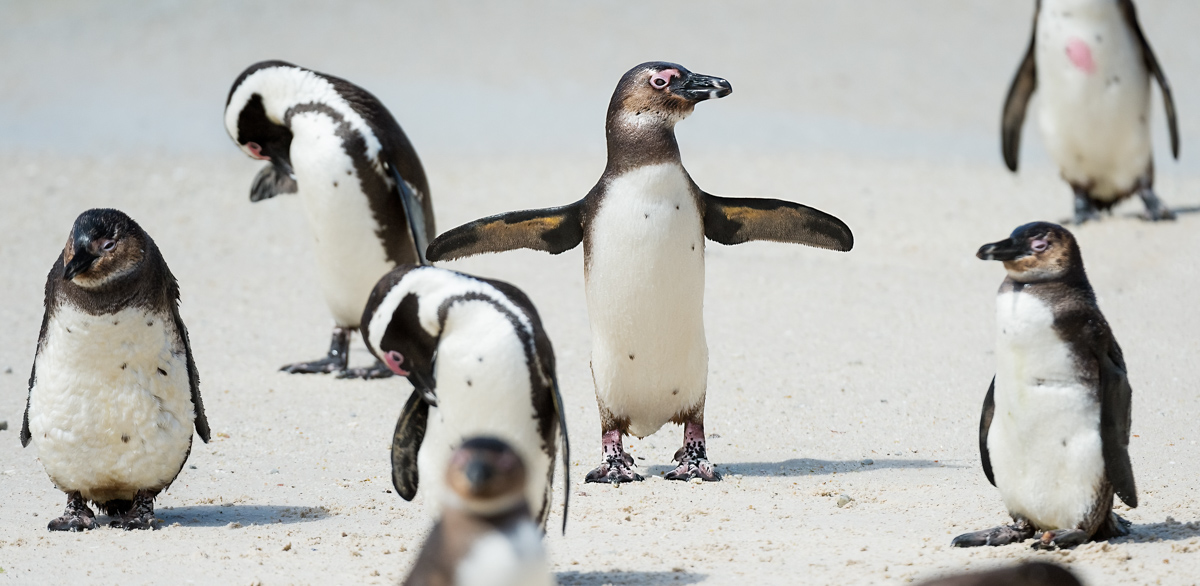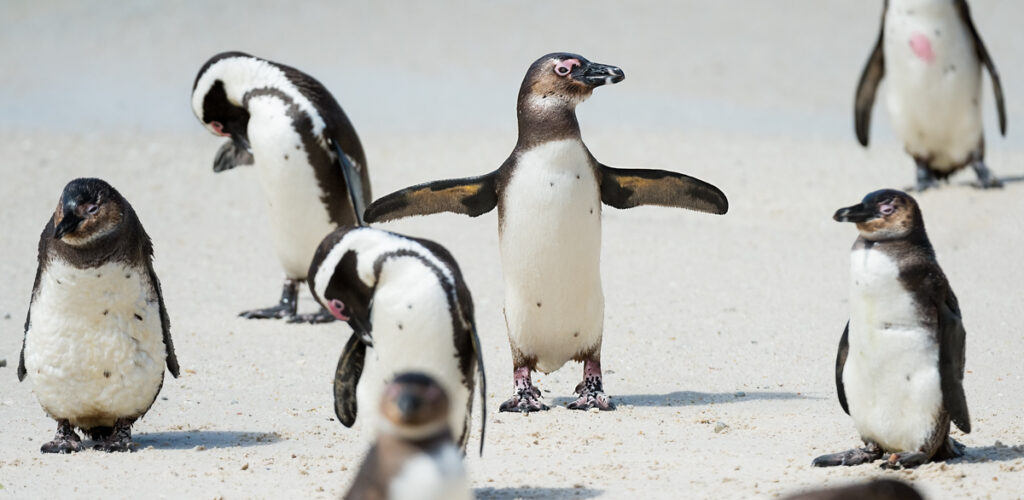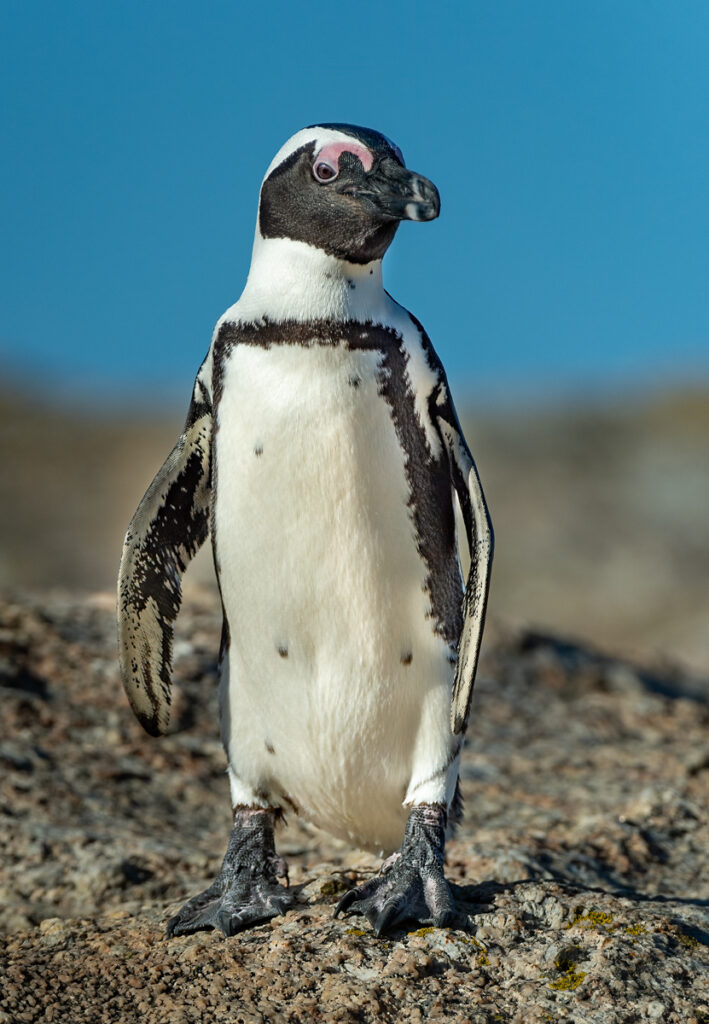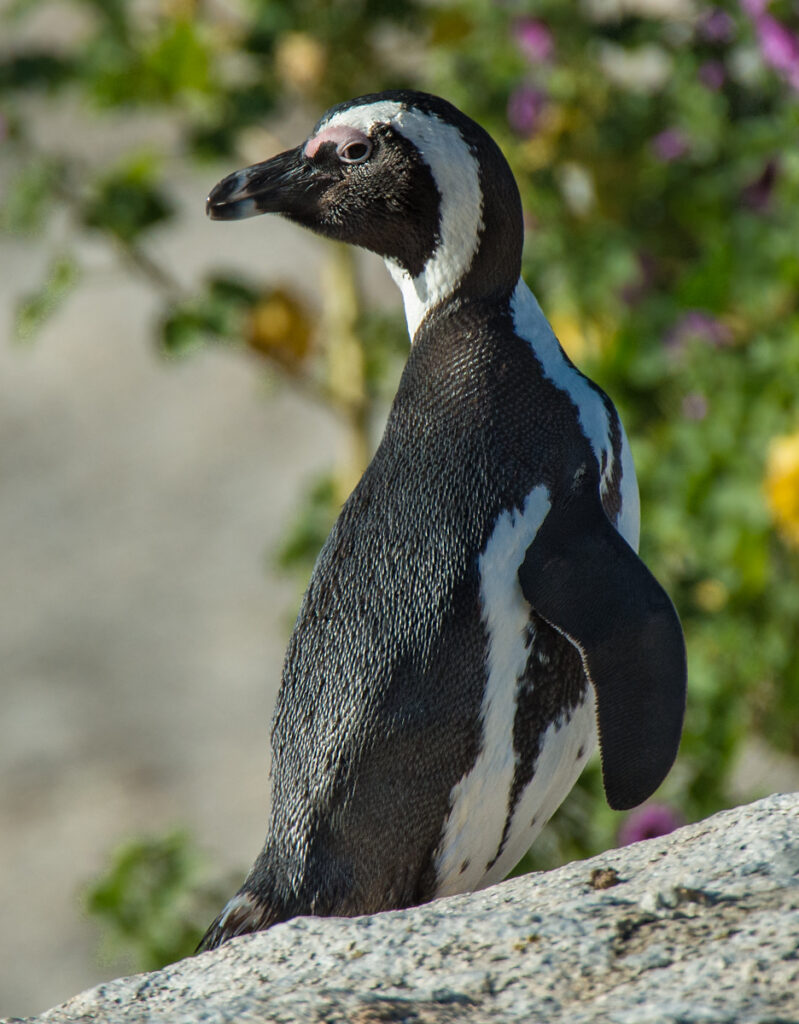
When most people think of penguins, they imagine ice-bound birds at the bottom of the world, waddling their way across Antarctic ice sheets. I’ve had the pleasure and privilege, however, of enjoying penguins in much more hospitable conditions, strolling along the beaches of South Africa. And while African penguins are definitely special, there is more than just their unique location that makes these birds stand out.

Meet the African Penguin
The African penguin (Spheniscus demersus) is not only known for its geography – its coastal range extends around the Cape of Good Hope from western Namibia to central Mozambique – but also for its loud braying call. Similar to a donkey’s bray, this call also gives these birds the nickname jackass penguin. Furthermore, their dark feet gives them one more nickname – black-footed penguin.
No matter what you call them, however, these birds are always interesting. With one black band swooping from the breast down the flanks, their black-and-white plumage is perfect camouflage from above and below, a pattern called countershading. When these birds are in the water and seen from above, their dark backs blend into the waves. Similarly, when their light bellies are seen from below, they blend into reflections coming through the surface of the water.
The gentle spotting on the birds’ bellies is the most interesting part of their coloration, however. Each African penguin has a few dark spots spangled across its white chest and abdomen. That pattern of spots is unique to each bird, just as our fingerprints are unique.
Yet these birds aren’t just black and white. A pink patch of bare skin above each eye acts as a temperature regulator, and will change from pale pink to darker pink-red hues as the bird heats up and more blood flows to the skin to help the bird keep cool.

Just Keep Swimming
African penguins, like all penguins, are phenomenal swimmers. These birds can hold their breath for more than two minutes at a time, and they can dive up to 400 feet deep while fishing. They chase their prey, typically sardines, anchovies, shrimp, krill, and crustaceans, swooping and curving through the water with ease.
Their swimming speed is also astonishing – an African penguin can swim at speeds up to 12 miles per hour. That may not seem too quick, but bear in mind that the world record for human swimming, set by Olympic gold medalist Michael Phelps, is just half that speed – six miles per hour. African penguins could easily do laps around any human swimmer!

What these birds can’t do laps around, however, is fishing boats and commercial fishing operations. Overfishing in the penguins’ range is dramatically changing the birds’ food supply, forcing African penguins to swim greater distances for less rich food sources. This, along with oil spills and other contamination not just in their feeding grounds but on the coastal islands where the birds breed, is having catastrophic impacts on African penguin populations. Where there were once millions of African penguins in the world, the population today is estimated at fewer than 45,000 birds, and that number continues to decrease each year.
Unfortunately, the simple fact that these penguins can be so easy to see – one of the most popular places to see African penguins is Boulders Beach, just south of Cape Town, one of the largest cities in South Africa – may make it seem like the birds are adaptable and in no danger. African penguins are, however, endangered, and they need our help.
Protecting African Penguins
Even if you can’t visit these penguins yourself, you can easily help protect them. Choosing sustainably harvested fish and seafood is critical to protect African penguins’ food supplies, and using alternative fuels and reducing dependence on fossil fuels can minimize the risk of oil spills that destroy the birds’ feeding and breeding grounds. Supporting marine protection initiatives and organizations that rehabilitate penguins are also helpful. Because African penguins are the most widely exhibited penguin species in zoos and aquariums around the world, supporting the conservation work of those zoos and aquariums can help protect these birds.

The African penguin is the first penguin species ever described by European explorers, having been noted in the records of Portuguese explorer Vasco de Gama’s crew in November 1497 while sailing around Africa en route to India. While the bird wasn’t explicitly named, the braying call and fantastic swimming was unusual enough to be noted.
What a shame if these birds, which have fascinated humans for more than 500 years, were to disappear, when we can take such easy steps to protect them.


